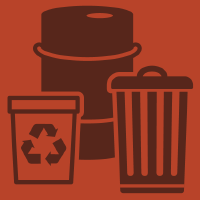Topic Editors

Advances in Organic Solid Waste and Wastewater Management

Topic Information
Dear Colleagues,
The management of organic solid waste and wastewater is a global challenge due to stricter environmental regulations, ecosystem impacts, climate change, and the need to valorize waste. This requires multidisciplinary approaches that provide comprehensive solutions to these complex problems.
This Topic seeks to collect contributions on the most recent advances in organic solid waste and wastewater management. Topics of interest include issues related to wastewater resource recovery, emerging pollutants, development and use of advanced materials, including nanomaterials, green and sustainable technologies, waste to energy or to valuable products, biochar production, advanced oxidation processes, biological nutrient removal, food waste valorization, anaerobic digestion advances, microbial community studies, climate change mitigation, and circular economy among others.
We are pleased to invite you to send your contributions to this multidisciplinary topic. Full papers, communications, and reviews are all welcome.
Prof. Dr. Alejandro Alvarado-Lassman
Prof. Dr. Carlos Velasco-Santos
Prof. Dr. Juan Manuel Méndez-Contreras
Topic Editors
Keywords
- green and sustainable technologies
- waste to energy
- anaerobic digestion
- climate change mitigation
- circular economy
- biomass valorization
- carbon nanomaterials
Participating Journals
| Journal Name | Impact Factor | CiteScore | Launched Year | First Decision (median) | APC | |
|---|---|---|---|---|---|---|

Energies
|
3.2 | 5.5 | 2008 | 16.1 Days | CHF 2600 | Submit |

Materials
|
3.4 | 5.2 | 2008 | 13.9 Days | CHF 2600 | Submit |

Molecules
|
4.6 | 6.7 | 1996 | 14.6 Days | CHF 2700 | Submit |

Waste
|
- | - | 2023 | 17.8 Days | CHF 1000 | Submit |

Water
|
3.4 | 5.5 | 2009 | 16.5 Days | CHF 2600 | Submit |

MDPI Topics is cooperating with Preprints.org and has built a direct connection between MDPI journals and Preprints.org. Authors are encouraged to enjoy the benefits by posting a preprint at Preprints.org prior to publication:
- Immediately share your ideas ahead of publication and establish your research priority;
- Protect your idea from being stolen with this time-stamped preprint article;
- Enhance the exposure and impact of your research;
- Receive feedback from your peers in advance;
- Have it indexed in Web of Science (Preprint Citation Index), Google Scholar, Crossref, SHARE, PrePubMed, Scilit and Europe PMC.



